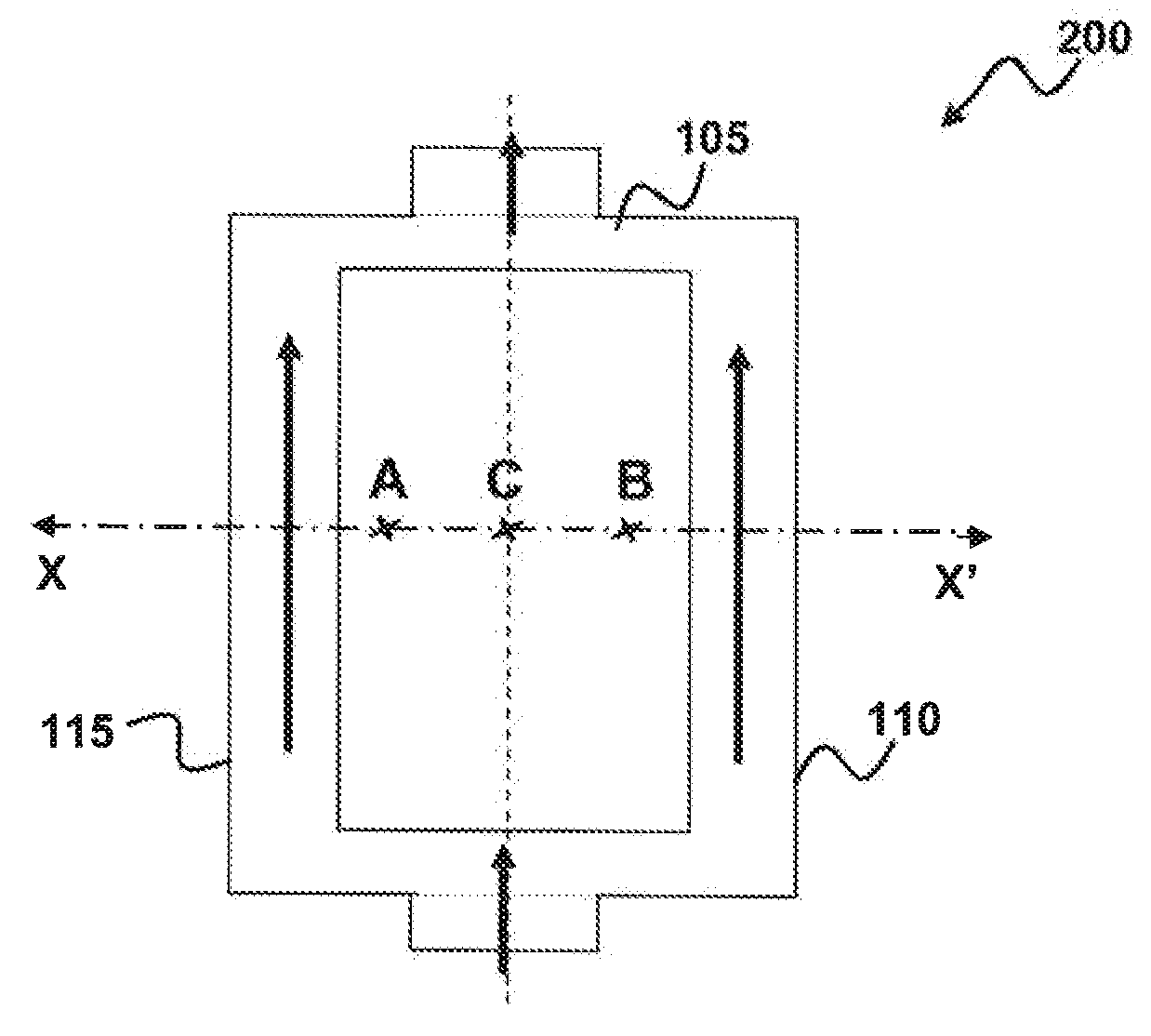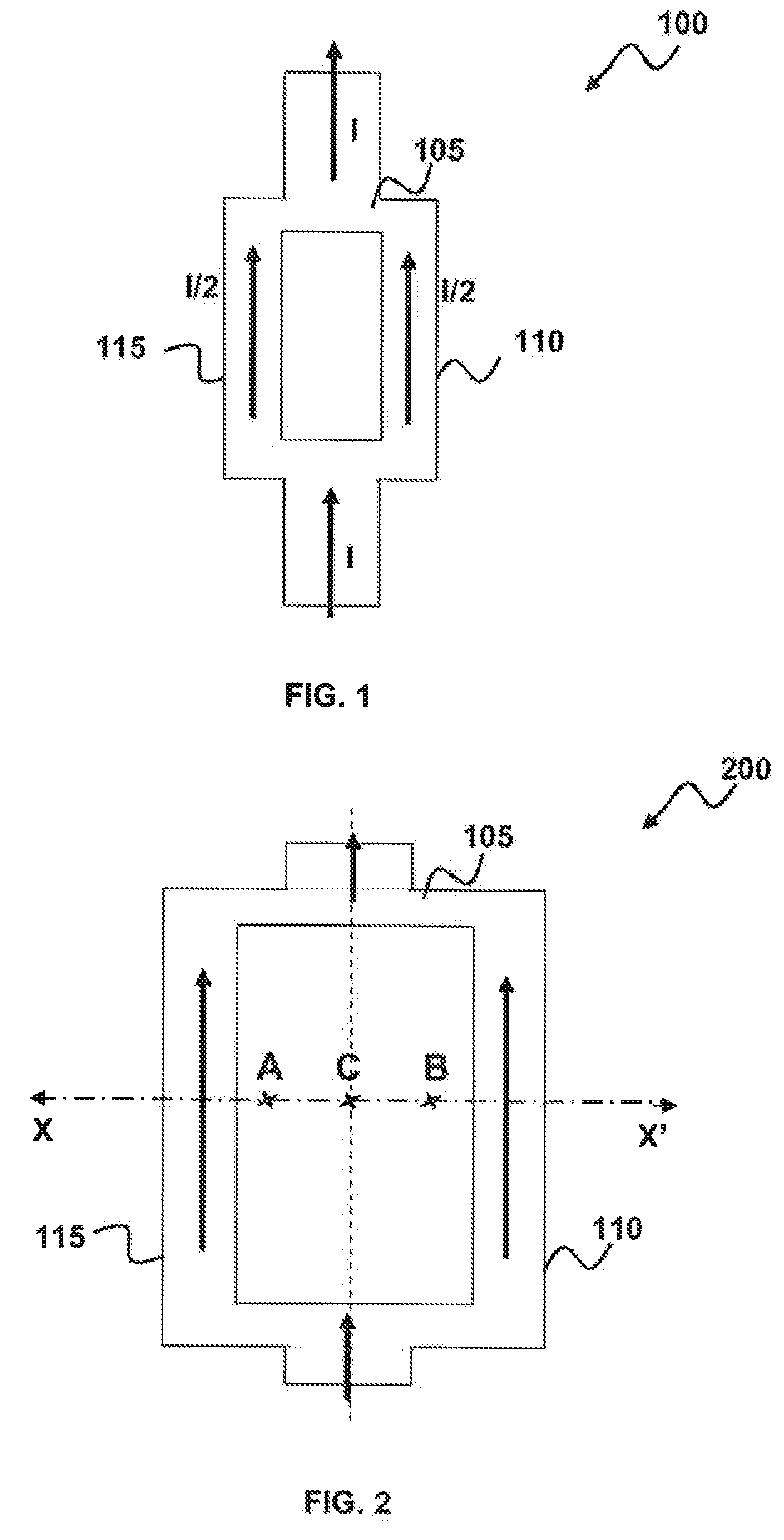Core-less current sensor
a current sensor and coreless technology, applied in the field of current sensors, can solve the problems of low cost of current transformers, inserting voltage drop and not providing isolation, and limiting cost, size, linearity and temperature performan
- Summary
- Abstract
- Description
- Claims
- Application Information
AI Technical Summary
Benefits of technology
Problems solved by technology
Method used
Image
Examples
Embodiment Construction
[0026]The particular values and configurations discussed in these non-limiting examples can be varied and are cited merely to illustrate at least one embodiment and are not intended to limit the scope thereof.
[0027]FIG. 1 illustrates an explanatory diagram of a core-less current sensor 100, which can be implemented in accordance with a preferred embodiment. The current I can be passed through a pair of parallel conductors 105. The current I divide equally between the conductors 110 and 115 and each conductor carries an equal current I / 2. The size of conductors 110 and 115 can be determined based on the permissible current density for conducting material like copper, aluminum, etc. For example, a copper conductor with a cross sectional area of 4 mm2 should be fine for currents up to 25 A.
[0028]The conductors 110 and 115 can be traced out on a PCB (Printed Circuit Board) up to certain current ratings. Ratings can be determined based on the current density. The current density is given...
PUM
| Property | Measurement | Unit |
|---|---|---|
| current | aaaaa | aaaaa |
| currents | aaaaa | aaaaa |
| magnetic | aaaaa | aaaaa |
Abstract
Description
Claims
Application Information
 Login to View More
Login to View More - R&D
- Intellectual Property
- Life Sciences
- Materials
- Tech Scout
- Unparalleled Data Quality
- Higher Quality Content
- 60% Fewer Hallucinations
Browse by: Latest US Patents, China's latest patents, Technical Efficacy Thesaurus, Application Domain, Technology Topic, Popular Technical Reports.
© 2025 PatSnap. All rights reserved.Legal|Privacy policy|Modern Slavery Act Transparency Statement|Sitemap|About US| Contact US: help@patsnap.com



